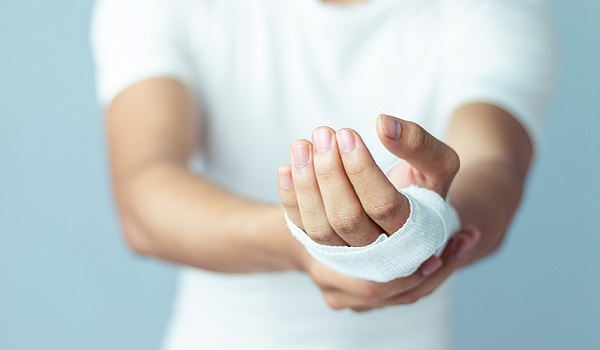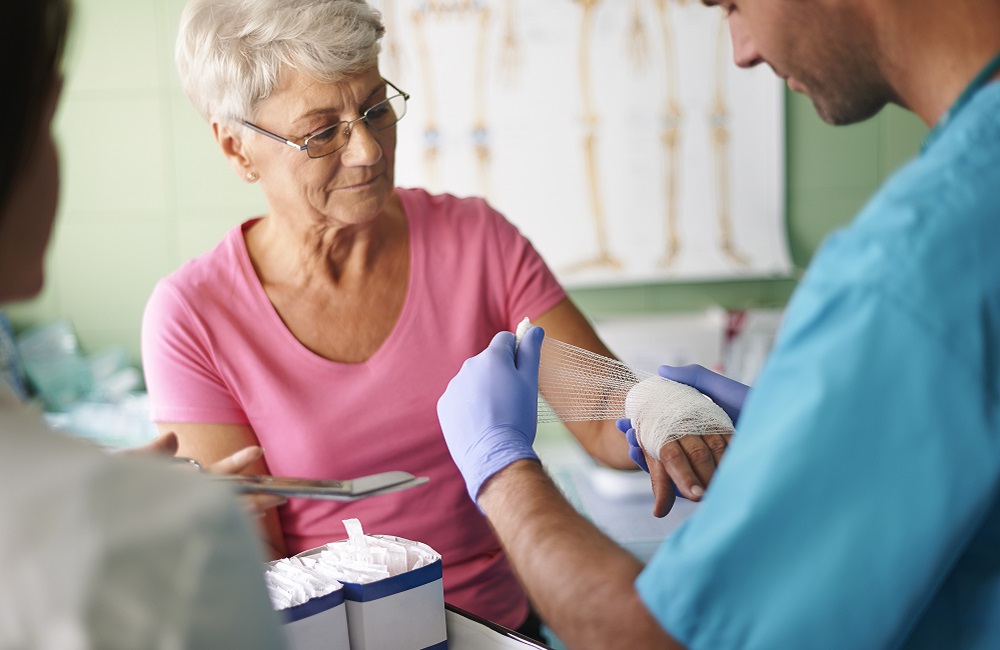What are actually
Acute and chronic wounds?
Wounds are injuries or damage to the skin or tissue that can be caused by various factors. In the context of allergic skin diseases, wounds can be caused by injuries caused by scratching or rubbing due to itching, for example. There are different types of wounds, including acute and chronic wounds. Acute wounds occur suddenly and usually have a limited duration, whereas chronic wounds are deeper and persist over a longer period of time. The treatment of allergic wounds or wounds in general requires an individualized approach to control the underlying cause, prevent infection and promote the healing process.
About the symptoms
More information
Acute vs. chronic wounds in general
What are acute wounds?
Acute wounds occur suddenly and usually have a limited duration. They often occur as a result of injuries, operations or burns. Acute wounds go through a normal healing phase in which the body actively promotes the healing process. With appropriate treatment and wound care, acute wounds can usually heal within a few days or weeks. During this time, various symptoms may occur, including pain, redness, swelling, warmth and possibly bleeding. The type and severity of the symptoms depends on the individual wound. Adequate treatment and appropriate wound care are crucial to promote the healing process and prevent possible complications.
What are chronic wounds?
The definition of chronic wounds differs in that they are deeper and persist over a longer period of time and do not show a normal healing process. They remain open and do not heal within a reasonable period of about three months. Causes can be circulatory disorders, pressure ulcers, diabetes, venous insufficiency or skin diseases. Chronic wounds are often accompanied by a persistent inflammatory reaction and require specialized treatment to promote the healing process.
The pain intensity of a chronic wound can vary and depends on its size and depth. In addition to pain, reddish to brownish discoloration of the skin may appear around the wound. Itching, weeping or unpleasant odors may occur. Pain can increase if the wound is inflamed or the affected area is moved. Sleep disturbances due to intense perceived pain and itching at night are common.
What are important criteria for the assessment of acute and chronic wounds?
The distinction between acute and chronic wounds is important as they require different treatment approaches. While acute wounds usually respond well to conventional wound care, chronic wounds often require specialized and comprehensive treatment, taking into account the underlying causes.
The following criteria are taken into account in the diagnosis and choice of treatment strategy:
Duration of the wound
Duration of the wound
Acute: A few weeks
Chronic: Several months
Healing process
Healing process
Acute: Normal
Chronic: Stagnant and slow, but also worsening and recurring
Underlying causes
Underlying causes
Acute: Consequence of an injury or traumatic event
Chronic: Consequence of a disease, e.g. circulatory disorder, diabetes, skin diseases
Inflammatory reaction
Inflammatory reaction
Acute: Temporary
Chronic: Persistent and difficult to control
Response to conventional treatment
Response to conventional treatment
Acute: cleaning, disinfection, appropriate wound care are effective
Chronic: specialized and individually adapted treatment approaches required
What does the healing process look like?
In general, wounds typically go through three stages in the healing process. Although most acute wounds heal without complications, there is always a risk of complications such as infection, scarring or inadequate wound closure. Complications can occur in any of the three stages and may lead to chronic wounds.
Inflammation stage
This is the initial stage of wound healing, in which the wound is cleansed and an inflammatory reaction takes place. Redness, swelling, warmth and pain may occur.
Proliferation stage
At this stage, the tissue begins to heal. New tissue is formed, which tightens the wound edges, and new blood vessels are formed to improve wound care.
Maturation stage
This is where the newly formed tissue is consolidated. The scar tissue becomes more stable and the wound gradually closes. However, scarring may continue for some time.
This is the initial stage of wound healing, in which the wound is cleansed and an inflammatory reaction takes place. Redness, swelling, warmth and pain may occur.
At this stage, the tissue begins to heal. New tissue is formed, which tightens the wound edges, and new blood vessels are formed to improve wound care.
This is where the newly formed tissue is consolidated. The scar tissue becomes more stable and the wound gradually closes. However, scarring may continue for some time.
What can I do myself for acute (or chronic) wounds?
Regular wound checks
Regular monitoring allows changes in the healing process to be recognized and, if necessary, a specialist can be consulted. He can then make adjustments to the treatment. Individual treatment and pain control are particularly important for chronic wounds in order to improve quality of life.
Adequate nutrition
A balanced diet that contains sufficient protein, vitamins and minerals can support the healing process. Nutritional advice or the administration of dietary supplements may be necessary.
Optimization of blood circulation
Smoking impairs blood circulation and oxygen transport in the body, which can have a negative impact on wound healing. Giving up smoking can improve the healing process. Optimizing blood circulation is particularly relevant for chronic wounds, which are often associated with circulatory disorders. Measures such as regular exercise, adequate hydration and, if necessary, the use of compression stockings can promote blood circulation.
Behavioral patterns in the focus of allergic skin diseases
It is important to treat allergic skin conditions early to reduce the risk of wound formation. Appropriate care and treatment of acute and chronic wounds is crucial to alleviate symptoms, restore skin integrity and improve the quality of life of those affected. A holistic approach that includes identifying and avoiding allergens, using topical treatments and supporting the healing process can help to improve the management of allergic skin conditions and the prevention of wounds.

Sources
Please note that all content provided regarding individual medical conditions, treatments, procedures, etc. is general information and may vary depending on the physician:in and individual case and initial situation.
For more detailed information, please always consult your doctor.
Federal health information (n.d.). Chronic wounds
www.gesund.bund.deLippert, H.: Wound Atlas: Compendium of Complex Wound Treatment. Georg Thieme Verlag, 2nd edition, 2006.
S3 guideline of the German Society for Wound Healing and Wound Treatment: "Local therapy of chronic wounds in patients with the risks of peripheral arterial occlusive disease, diabetes mellitus, chronic venous insufficiency" Version: 2012.
